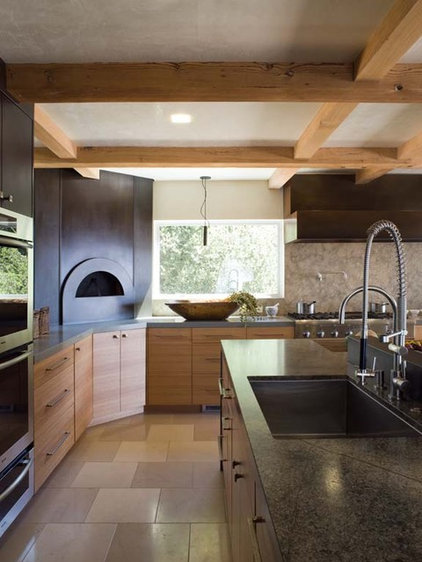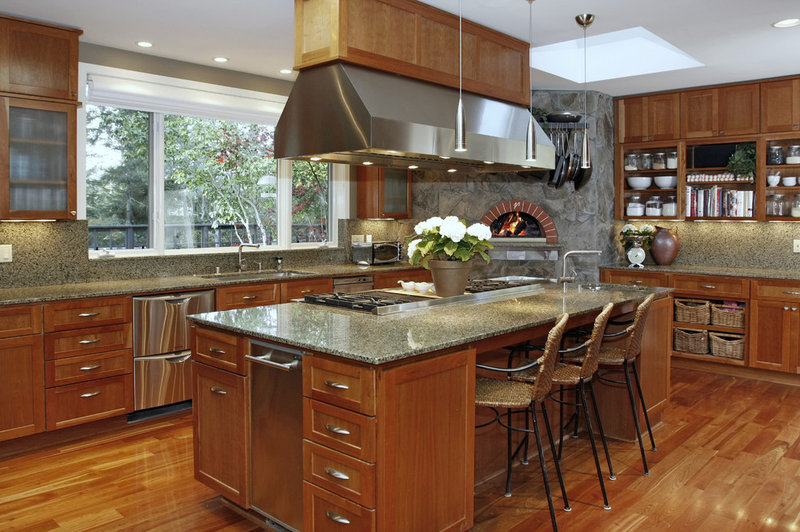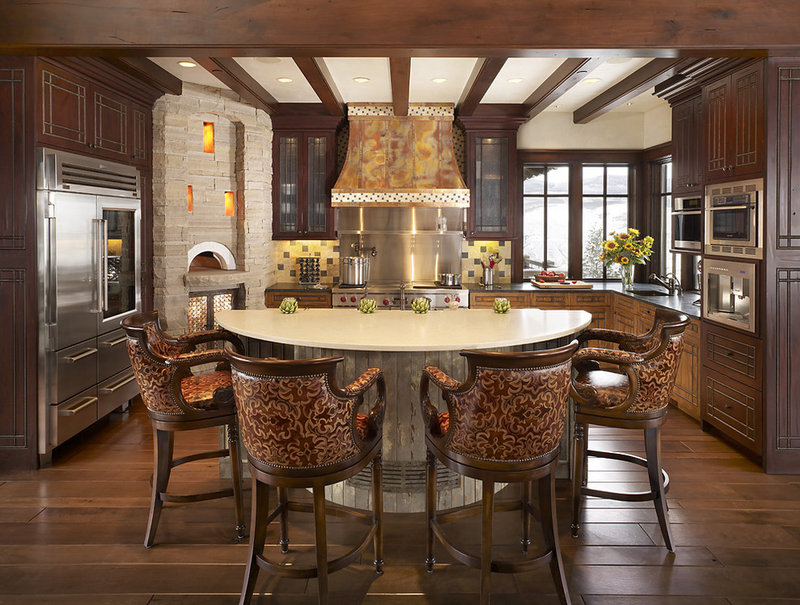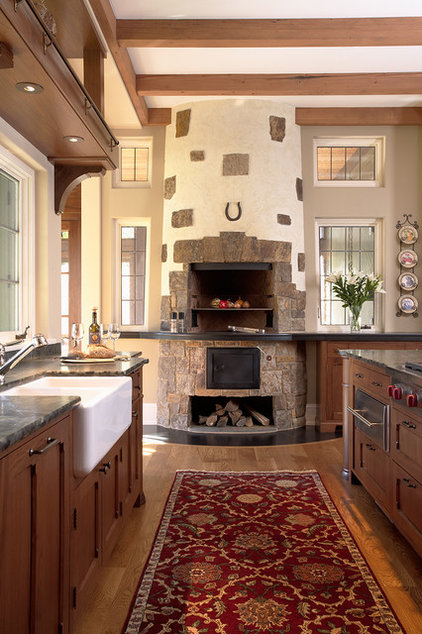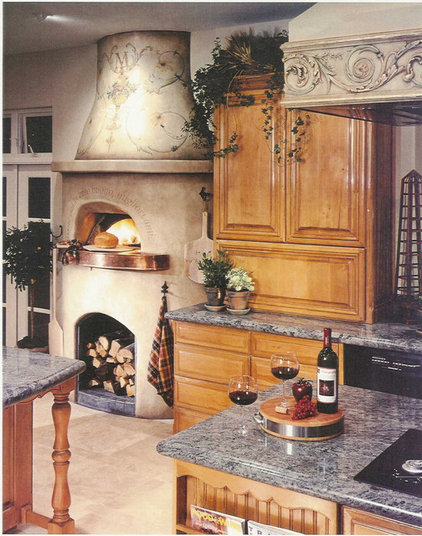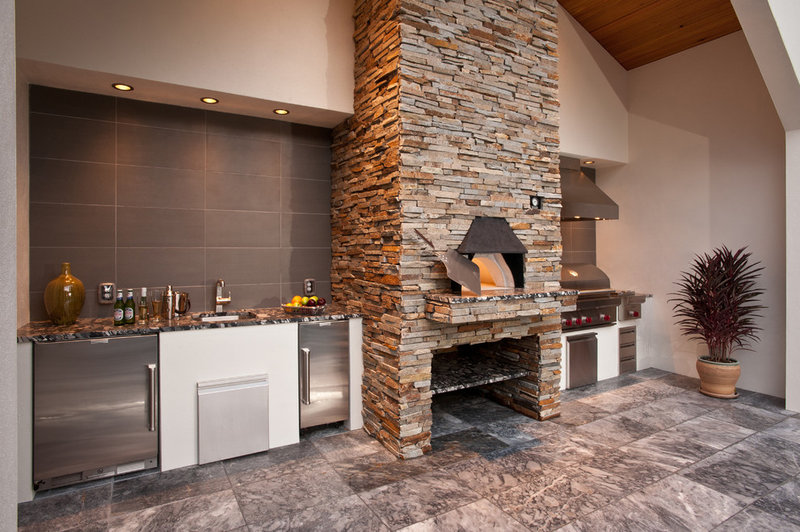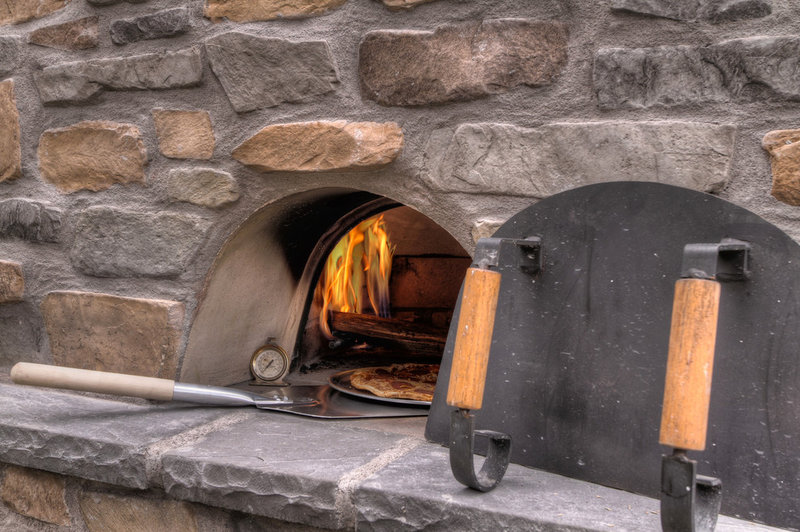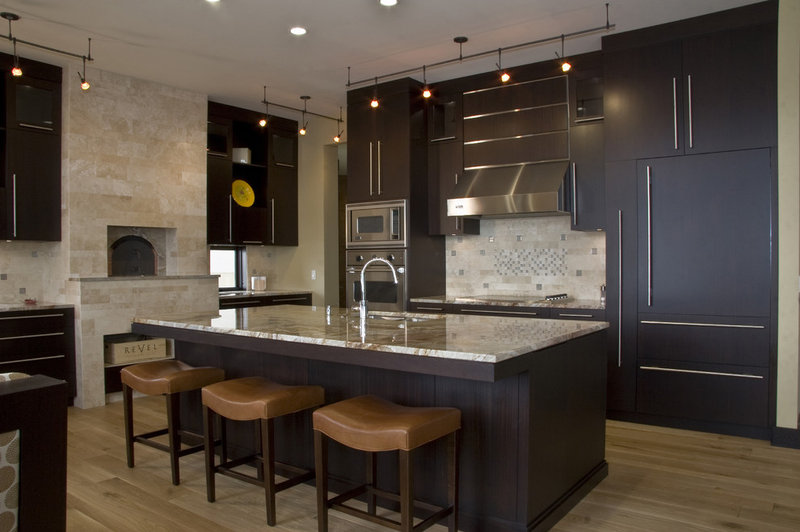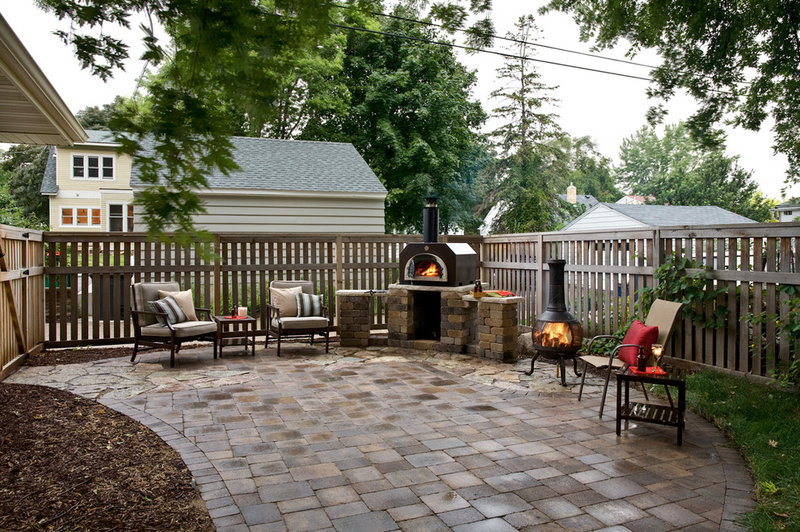I'm getting hungry just thinking about it...
Kitchen Luxuries: The Wood-Fired Pizza Oven
If you love homemade pizza and are (ahem) rolling in dough, a wood-burning oven may be just the right kitchen investment
Houzz Contributor, Certified Kitchen and Bath Designer and the principal... More
Share:
Pizza and wood-burning ovens are a popular addition to high-end kitchens these days. Few meals beat the taste of a perfectly crisp pizza pie from one of these ovens, and they bake everything from bread to chicken, making them a bonus cooking center for your dream kitchen. In cold weather you can simply start a fire and invite friends and family over to relax while you cook in front of the open flame.
Could a pizza oven be right for your next kitchen?
Could a pizza oven be right for your next kitchen?
Here a traditional stone exterior complements the warm tones of this kitchen cabinetry. |
I love how this wood oven has a few windows for visual interest when the oven is fired up. |
It generally takes an hour to an hour and a half for a wood-fired oven to reach its optimal temperature. A conventional stainless steel thermometer can help you find the precise temperature; some models come with temperature gauges. Keep in mind that you'll need doors or some kind of barrier in front of the fire to help you get an accurate reading. |
Once the oven is heated, the heat is stored in the thick walls and radiates evenly across the interior dome. The floor of the oven stays a few degrees cooler, which helps give pizzas a crispy exterior and a soft interior. Don't forget to get a pizza paddle! |
Custom pizza ovens are a big investment of time and money. If you want one built onsite, you'll need to account for labor, material selection and the necessary chimney and fan (which can add another $2,000 to the cost). Overall I find them to be comparable in price to a custom wood-burning fireplace. There are portable and modular wood-burning-oven kits, which offer the same functionality without the custom look. These kits tend to range from $6,500 to $13,000, depending on the size and material. |
If you don't have the option to include an indoor wood-burning oven, consider carving out a bit of space in the yard to build a smaller version. Regardless of whether you opt for an indoor or outdoor pizza oven, always check your local building codes and speak with the building inspector before starting your project. Some municipalities do not allow outdoor fireplaces or wood-burning ovens. |

